Thessaloniki Tour
Estimated Duration
4 Hours
Estimated Distance
14 Km
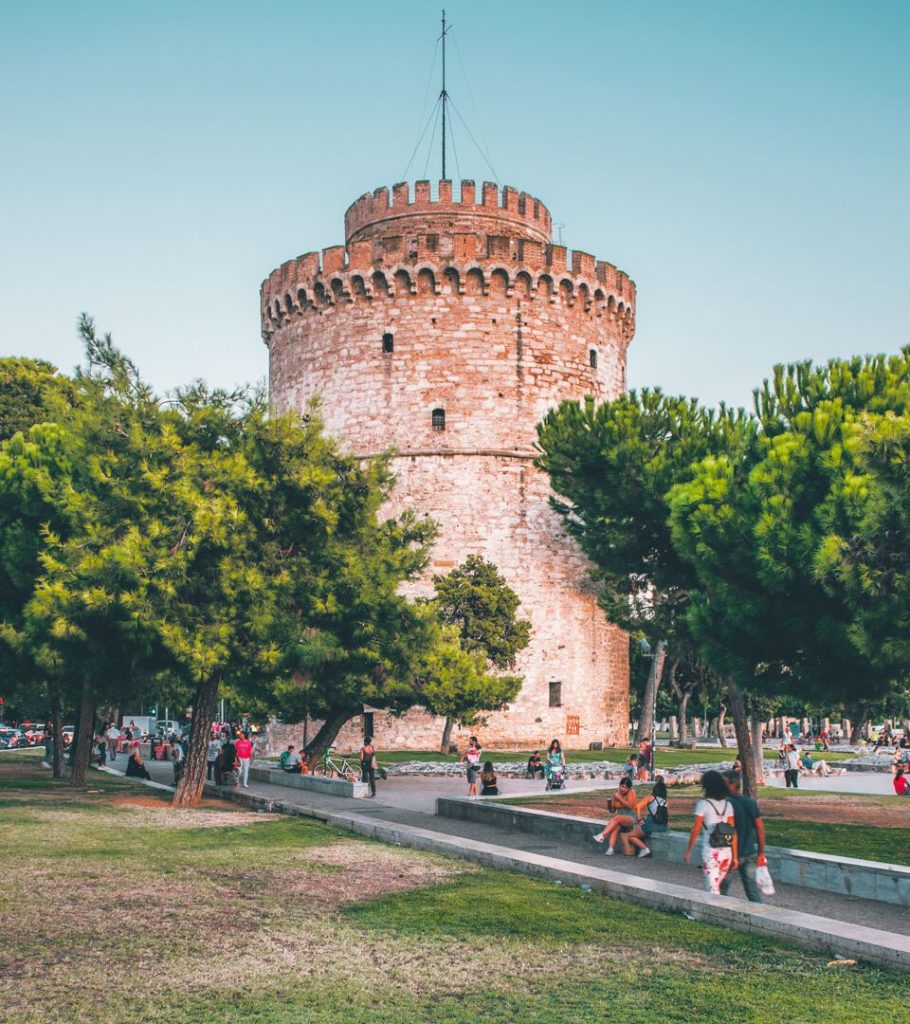
White Tower of Thessaloniki
The White Tower was built in the fifteenth century after the fall of Thessaloniki to the Ottomans in 1430. At its location there had been an older tower belonging to Thessaloniki’s Byzantine fortifications, where the eastern wall met the sea wall.
The Tower was the eastern end of the sea wall; there was another at the western end, and a third in between.
Over the years, it was referred to by various names: the Lion Tower in the sixteenth century, the Tower of Kalamaria in the eighteenth, while in the nineteenth century we find it with two names, depending on its use: the Tower of the Janissaries when the garrison of Janissaries was stationed there, and the Tower of Blood (Kanle Kule) when it became a prison and place of execution for convicts. In 1880, in his book on the city’s monuments the historian Mihail Xatzi Ioannou called it the Bastille of Thessaloniki, where those condemned to death were slaughtered on its terrace and their blood dyed its walls red, as a cannon shot from the western part of the city signified that the death sentence had been carried out.
In 1883, on orders of the Sultan Abdul Hamid II, the Tower was painted white and given the name “White Tower” (Beyaz Kule). We are in the second half of the nineteenth century, an era when the winds of reform were blowing in the Ottoman Empire in the wake of pressure by England, and the Tower with its “bloody” name was not appropriate to the empire’s new character. It was a convict, Nathan Guiledi, who whitewashed the Tower in exchange for his freedom. It has remained with its current name since then. In time it became the symbol of Thessaloniki, since from 1911 it stood by itself on the seacoast following the demolition of the sea and eastern walls and its surrounding wall.
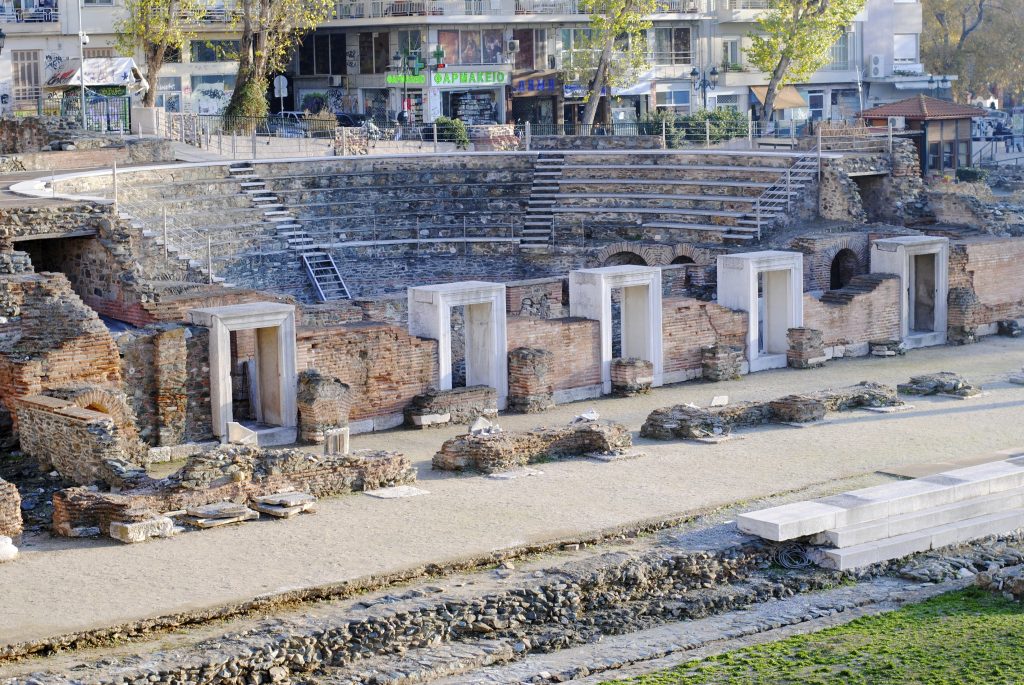
Roman Forum of Thessaloniki
The Ancient Forum, the administrative centre of ancient Thessaloniki, occupied an area about two hectares in the heart of the city. Its construction began at the end of the 2nd century A.D. on the site of an older forum dating from early Imperial times.
The complex was arranged around a rectangular paved square. There were stoas on three sides, each of which consisted of a double row of columns and provided direct access to a surrounding zone of public buildings. The southern stoa stood on a vaulted substructure (cryptoporticus) – a double arcade which lay partly underground, making use of the natural slope of the land. To the south, along the whole of the cryptoporticus, lay a row of shops fronting the ancient shopping street which ran along the north side of present-day Philippou St. Off this street lay minor entrances to the square, while the latter opened north, to the present-day Olympou St.
In the middle of the east wing, on the site of an earlier council – chamber, a building for public performances was erected, which, on the basis of the inscription and the statues of Muses found there, must have functioned as an odeon.
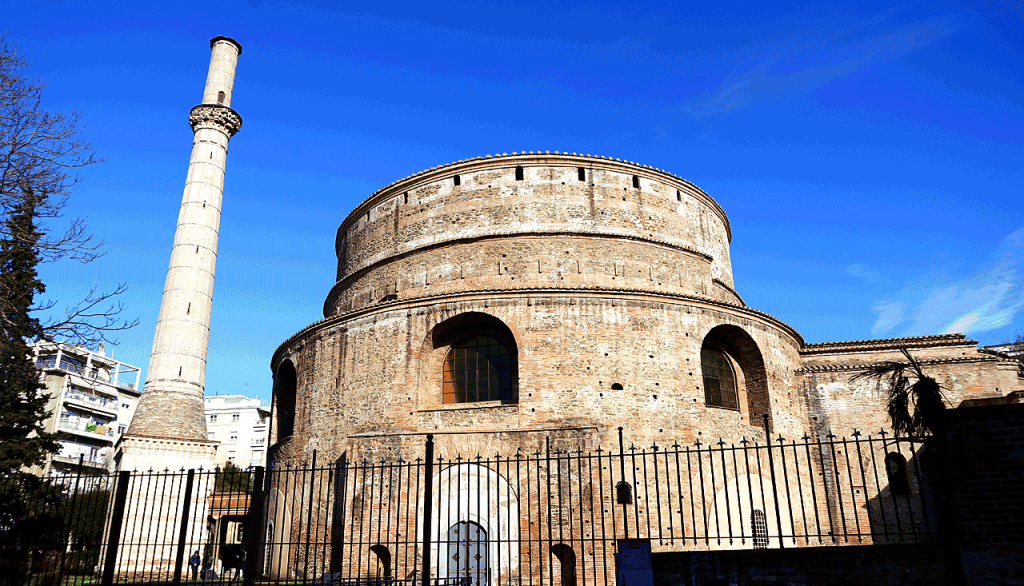
Rotunda of Galerius
The Rotunda of Galerius is an impressive circular Roman temple located in the center of Thessaloniki.
It was built in the 4th century AD and was originally dedicated to the Roman Emperor Galerius. Today, it serves as a museum and is a popular destination for tourists interested in ancient history.
Visitors can admire the beautiful mosaics and frescoes inside the temple, as well as the outstanding architecture of the building.

Arch of Galerius
The Arch of Galerius (or Kamara) in Thessaloniki, Macedonia: The Arch of Galerius is certainly among the most distinctive monuments in Thessaloniki.
The Roman Emperor Galerius ordered its construction so that a road running through this arch would connect it to his palace. The Arch of Galerius had a masonry symbolism with marble sculptural panels emphasizing on the power of the emperor.
The arch was constructed to celebrate the victory of Galerius over the Sassanid Persians. Originally it was an octopylon forming a triple arch, the central arched opening was 9,7 m wide and 12,5 m high, and the second openings on the other side were 4,8 m wide and 6,5 m high.
Today, only parts of the masonry symbols of the arches survive and three of the eight pillars.
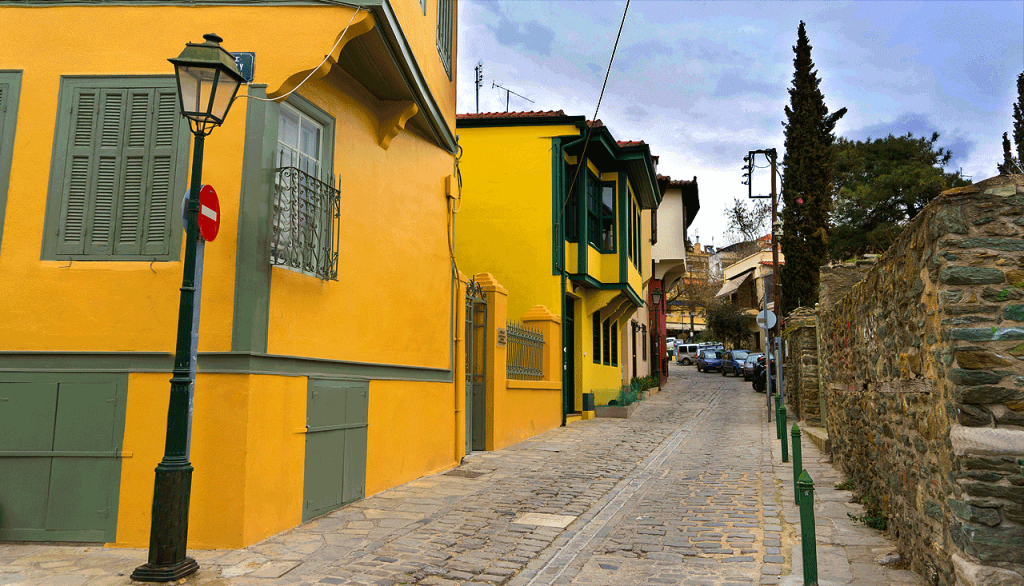
Thessaloniki Old Town Ano Poli
The Old Town (or else Ano Poli, or Upper Town) of Thessaloniki is located on the north of the modern town. This was the former Ottoman quarter, where a large community of Jews also lived. The Old Town of Thessaloniki has paved streets and stone houses. There, you will find many Byzantine churches and monasteries. The only active monastery out of the 20 that this quarter has is the Monastery of Vlatadon.
In the Old Town, you will also find the house of Kemal Attaturk, the famous Turkish leader. Kemal was born and raised in this house at the end of the 19th century, when the town was still under Ottoman rule. Today, this house hosts the Turkish Consulate and part of it works as a museum.
A large part of the Old Town, mostly the Jewish Quarter, was destroyed in a fire in 1917, which burnt the city in two days.
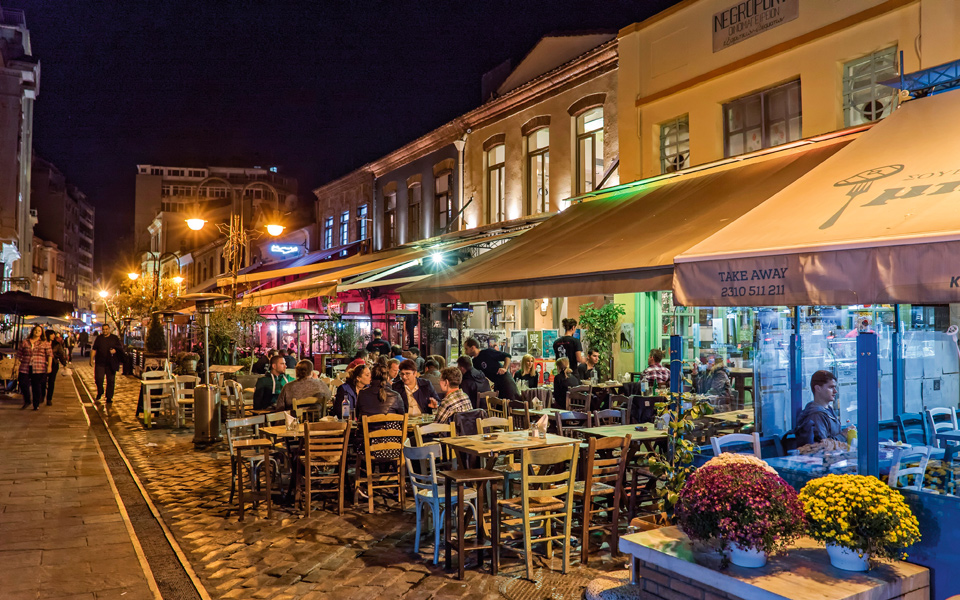
Thessaloniki Ladadika
Ladadika is located at the west side of the port. At the past, this was an ill-famous neighbourhood, but today it is considered as one of the best nightlife spots in Thessaloniki.
This is an old quarter, with narrow paved streets and neoclassical buildings.
Some abandoned houses can be found there, while some others have been restored and host cafeterias and restaurants.
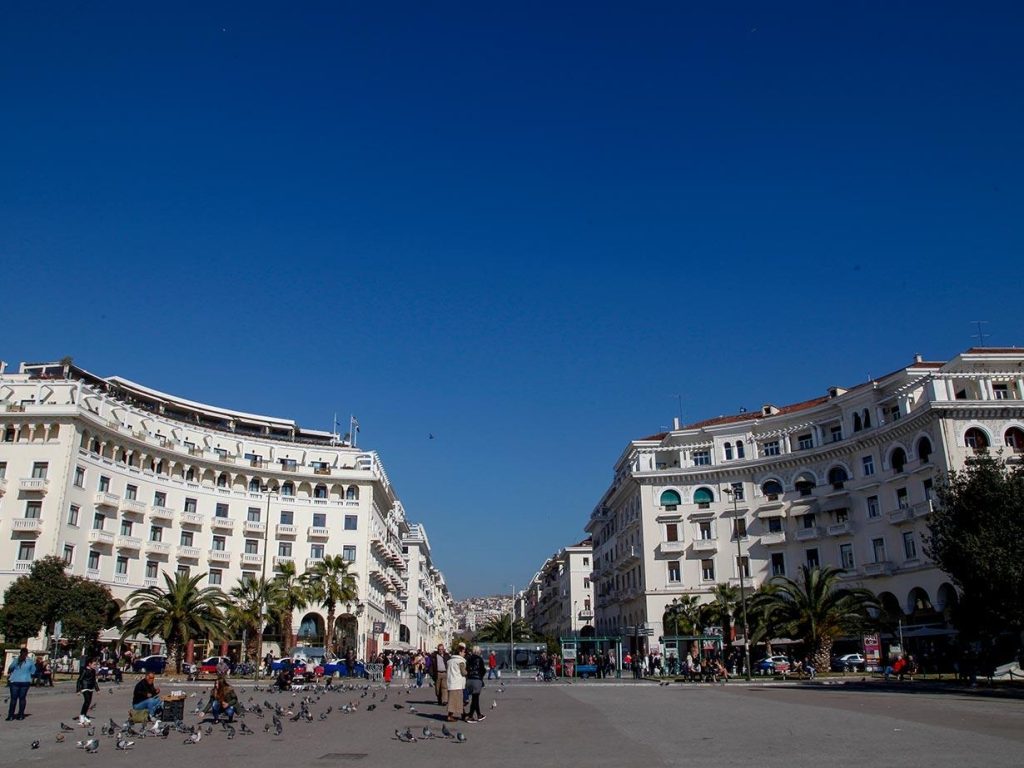
Square Aristotle
A Square risen from the ashes!
The heart of the city beats in Aristotle Square, one of the most beautiful and biggest squares of Greece. Came out literally from the ashes, the square was created when the city was redesigned by the French architect Ernest Hébrard, after the fire that destroyed the center of Thessaloniki in 1917.
The architecture of the colonnades and arches on the building facades followed European and Byzantine models and trends. Some of the most beautiful pieces embracing the square, are the impressive hollow building of the Electra Palace hotel on the west side and the Olympion cinema on the east side of the square, which is the seat of the Thessaloniki Film Festival.
The cafés are crowded all day long while dozens of happenings and events are held in the square throughout the year.
The ‘openness’ to the sea offers spectacular views, so it is a favorite meeting place and also a favorite place for relaxation and entertainment for both Thessalonians and visitors of the city.

